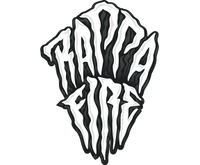A Comprehensive Guide to Natural Tobacco Products: Discover Their Unique Qualities
Introduction to Natural Tobacco
What is Natural Tobacco?
Natural tobacco refers to tobacco products that are minimally processed and do not contain additional chemicals or additives. These products are closer to their original form, allowing users to experience tobacco in its most authentic state.
The History of Tobacco Consumption
Tobacco has been cultivated and consumed for thousands of years, with its origins traced back to the indigenous peoples of the Americas. It was used in various rituals and as a trade item before becoming a staple in modern culture.
Types of Natural Tobacco Products
Cigars
Characteristics of Cigars
Cigars are distinguished by their size, shape, and the type of tobacco used. They are typically composed of a wrapper leaf, a binder leaf, and a filler tobacco.
How Cigars Are Made
The making of cigars is an intricate process involving the selection of tobacco leaves, aging, and hand-rolling, which significantly influences their flavor and quality.
Popular Brands and Their Unique Qualities
Brands like Cohiba and Montecristo are renowned for their exceptional craftsmanship and distinct flavor profiles, originating from specific regions like Cuba and the Dominican Republic.
Loose Leaf Tobacco
What Makes Loose Leaf Special?
Loose leaf tobacco is primarily used for rolling cigarettes and pipes. It offers a purer form of tobacco without the preservatives and chemicals found in pre-packaged cigarettes.
Uses of Loose Leaf Tobacco
This form of tobacco is versatile in use, allowing smokers to customize the strength and amount of tobacco in each roll.
Pipe Tobacco
Understanding Pipe Tobacco
Pipe tobacco is cut differently from cigarette tobacco, providing a broader range of flavors and smoking experiences. It is generally moister and coarser, making it ideal for pipe smoking.
How to Choose the Right Pipe Tobacco
Choosing the right pipe tobacco depends on personal preference for flavor intensity and the smoking time available, as some blends burn slower than others.
Chewing Tobacco
The Tradition of Chewing Tobacco
Chewing tobacco has a long history, particularly in rural areas of the United States. It is enjoyed for its strong flavor and nicotine content.
Health Implications
While natural, chewing tobacco still poses health risks similar to other forms of tobacco, particularly in terms of oral health and cancer risk.
Snuff
The Revival of Snuff Use
Snuff, a powdered form of tobacco taken through the nose, is experiencing a revival as an alternative to smoking, offering a different nicotine experience without the smoke.
How Snuff Differs from Other Tobacco Forms
Unlike smoking, snuff delivers nicotine rapidly without the need for inhalation, reducing the risk of lung-related issues but still posing significant health risks.
Cultivation and Production of Natural Tobacco
Growing Regions and Their Impact on Flavor
The flavor of tobacco greatly depends on the region where it is grown. Soil composition, climate, and cultivation methods all play crucial roles in defining the taste and quality of the tobacco.
The Harvesting and Curing Process
Tobacco leaves are harvested at specific times to maximize their flavor and then cured through various methods such as air, sun, or fire, each imparting different characteristics to the tobacco.
The Art of Enjoying Tobacco
How to Properly Smoke a Cigar
Smoking a cigar involves understanding its construction, choosing the right cut, and lighting it correctly to fully appreciate its complex flavors.
The Ritual of Pipe Smoking
Pipe smoking is more than just a habit; it's a ritual for many, involving the careful selection of tobacco, packing the pipe, and the slow, contemplative enjoyment of the smoke.
Tips for Freshness and Preservation
Proper storage is key to maintaining the freshness of tobacco. Humidors for cigars and airtight containers for loose leaf and pipe tobacco can prevent drying and preserve the tobacco's quality.
Health Considerations of Tobacco Use
Risks Associated with Tobacco
All forms of tobacco carry health risks, including heart disease, cancer, and respiratory problems. Natural tobacco is no exception, despite being free from additives.
Comparing Natural vs. Manufactured Tobacco Products
While natural tobacco products are often considered less harmful due to the lack of chemical additives, they still contain nicotine and other harmful compounds naturally present in tobacco leaves.
The Cultural Significance of Tobacco
Tobacco in Literature and Film
Tobacco has been a symbol in literature and film, representing sophistication, contemplation, or rebellion, depending on the context.
Tobacco Use Across Different Cultures
Different cultures have unique traditions and rituals associated with tobacco use, reflecting its integral role in social and ceremonial functions.
The Future of Tobacco Consumption
Trends in Tobacco Use
Innovations in Tobacco Products
The tobacco industry continues to innovate, with developments in natural product offerings and safer consumption methods being explored to reduce health risks.
FAQs about Natural Tobacco Products
What are the main differences between cigars and cigarettes?
How does the curing process affect the flavor of tobacco?
What should beginners know about choosing tobacco products?
Can natural tobacco be considered safer than commercial products?
How can one enhance the experience of smoking natural tobacco?
What are the legal considerations surrounding tobacco use?
Conclusion
Exploring the world of natural tobacco products opens up a realm of rich flavors and traditions. While they offer a purer form of tobacco, it's important to approach their use with knowledge of the inherent health risks and cultural significance.

